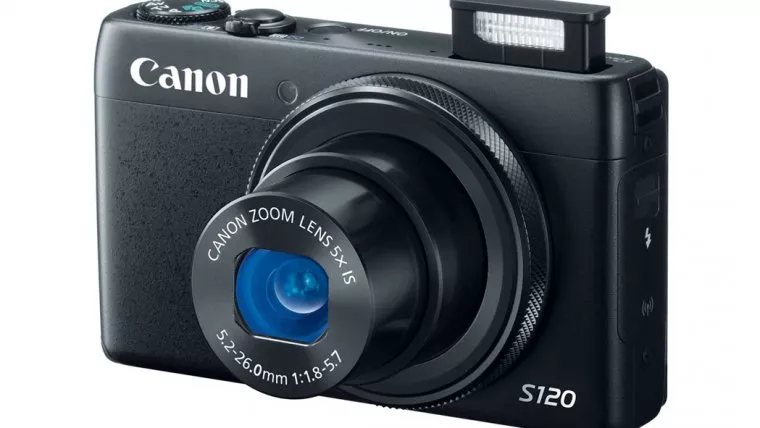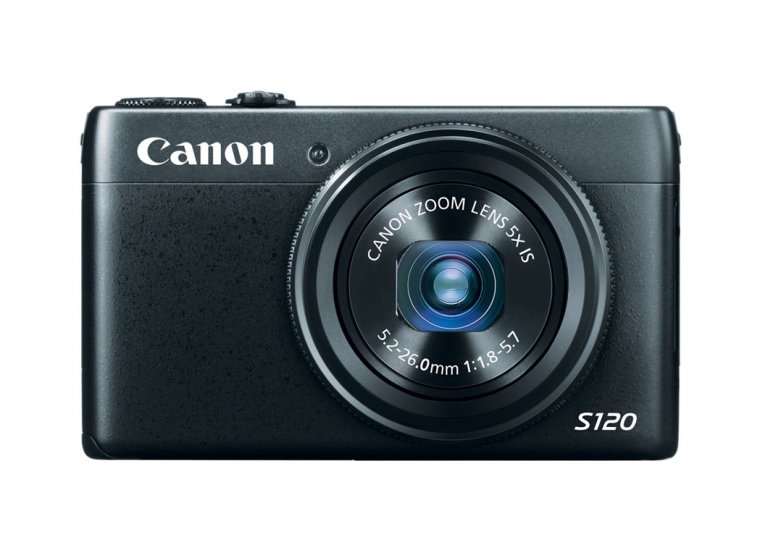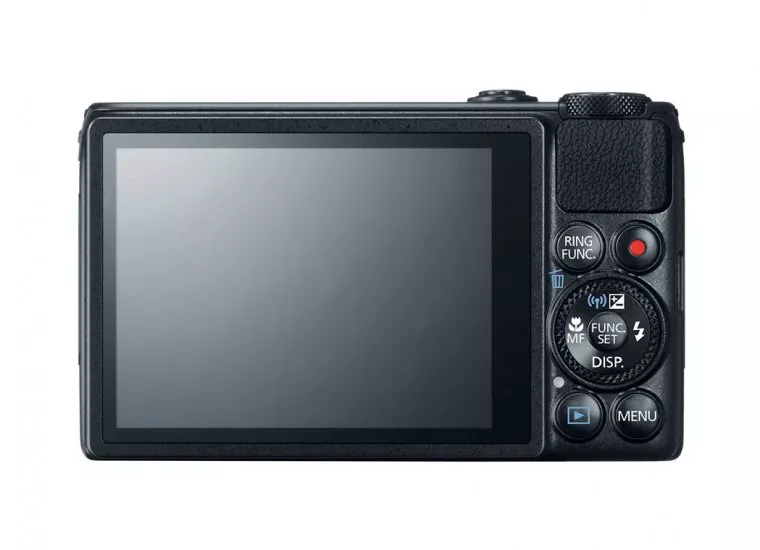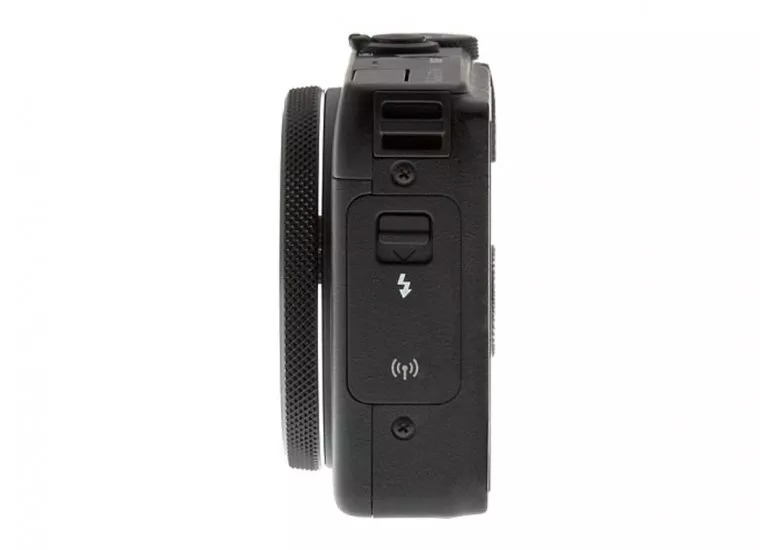
While not many compact cameras in today’s flooded camera market look like exciting products that stand out for some reason, luckily there is still enough of them if you increase your spending budget a little and move away from the really cheap ones. If you decide to do that, then one of the cameras that might catch your eye might just be the Canon S120. It’s an advanced compact camera with a bigger than average sensor and it achieves it without sacrificing one thing that makes a compact camera an interesting purchase for so many people and that is its size. It was launched the same month with Canon Powershot G16 so we could say they wouldn’t go far in term of technology. Looking for best Canon camera? Click here.
Table of Contents
The S120 really sets high standards in terms of body and design quality for a compact camera. Instead of being made of plastic like many compact cameras are to keep the weight down its body is made out of magnesium alloy and aluminium and also brushed in a way that it provides a good grip while you’re holding the camera. You really feel that quality from the moment you take the S120 into your hands and it’s something we are really pleased to see on a camera of this type. There’s also a little thumb rest made out of faux leather on the top right of the camera that also improves the overall grippiness. All of the buttons and dials also feel well made and are a pleasure to use. The S120 has all of these positive things surrounding its body while keeping a weight to an easily manageable 217 grams and that’s with the battery inside the camera. The number of buttons and dials isn’t anything to brag about, but all those that are available combined with a touch screen optimized interface still provide a nice overall experience.

Let’s take a look at the camera and see what the S120 has to offer. The front of the camera only sports the focus assist light, the lens barrel and nothing else. That helps the camera to look very clean and stylish from the front. The lens itself has a trick up its sleeve and that’s the control ring around it. Before we dwell into its functionality, we should mention that it operates very smoothly and that it comes with a really nice and grippy texture to it. The ring itself can act in many ways. Its best use is to change the value of something like ISO or exposure compensation, but it can be customized to do other things as well like programming it to act as a manual focus ring or to change aspect ratio and white balance and so on. You assign functions to it by using the Ring Func Button on the back of the camera and switch between them with the navigation controller dial. This type of functionality is nothing new for a compact camera, but we have to admit that Canon’s implementation is one of the best we’ve seen out of the bunch. The left side of the camera only reveals a switch to raise the flash unit out of the body while the right side contains only the expansion ports. The top of the camera holds that same flash unit, stereo microphones and the speaker, an On/Off switch, a shutter button that has a zoom lever around it and the main mode dial. This is so far, a very nice and practical layout. Finally, it’s time to look at the back of the camera. A large portion of the camera is taken by that 3-inch screen and all of the controls are located on the far right. Those are the Ring Func, Direct Record, Playback and Menu buttons as well as the main control dial that doubles as a four-way controller that holds the MF/Macro, Wi-Fi/Exposure compensation, Flash and Disp buttons. In the center of the control dial is the logical position of the Func/Set button. So, the S120 sports an average number of manual controls for a smallish compact camera and most of its control is centered around that large touch screen. The screen itself is very responsive and feels no different in operation than the one you’ll find on your smartphone.

The user interface is also well optimized for touch screen use and we never felt it was clunky or unintuitive in any way. Also, all the elements that appear on the screen are just the right size so even those people with larger than average hands should have no problems in using the S120 this way. So, this camera won’t appeal to those who are used to strictly using physical buttons and dials while shooting, but it works just right for its targeted audience and that is people looking for an easy to use compact camera that offers above average image quality and feature set. Those people will also appreciate the new and improved Auto shooting mode that has 58 different scenes programmed to it and it should help immensely with getting better results in this mode. There is also a helpful Hint and Tips feature that will display a short text description of some items on the screen and thus helping you learn your way around the S120. You can also turn it off if you don’t need it.

This camera also has built-in Wi-Fi which is something that many photographers will appreciate. You can access the Wi-Fi menu simply by pressing the button on the back that’s assigned to them. When the setup procedure starts you only need to name your camera and choose from the list of available devices to connect to and that’s it, you should be connected. To connect to your iOS or Android device you will need to download the CameraWindow application. You get the option to directly post your photos to a social network of your choice, to print them on a Wi-Fi enabled printer or to back them up to your smart device. Unfortunately, there is no way to remotely control the S120, something we were expecting to see on a camera at this price point. This does make sense in way that most regular users won’t even think of using this feature, but it would still be useful to have it as an easier way to take a shot of you and your family or friends while the camera is on the tripod, a use case scenario that doesn’t seem unrealistic in any way. Oh, well, aside from that omission, we are really happy with what Canon has done on the S120 as it turned out to be a nicely balanced camera that is simple to use but still offers enough manual control to satisfy even the more advanced photographers.
There really isn’t a lot to be said about the AF system in the S120, as it is a pretty basic contrast detect system. Before we dwell into its performance, let’s see what kind of features surround it. There aren’t many here as you would expect from a compact camera, but you do get some interesting ones. In regards to continuous AF, you have the ability to enable it either to try to find a subject to focus to before you take your shot or you can enable Servo AF and make it continuously focus as long as you keep half pressing the shutter button. While you won’t get a DSLR-like performance in this regard, it’s still surprisingly good for a small compact camera like the S120. There’s also a face detection mode called Face AiAF which of course searches around the image frame for a face to focus on. The last mode is your traditional single point AF and here it’s cold 1-point mode. Overall, the autofocus performance on the S120 is pretty good as long as there’s enough light in the scene. Be careful if you plan on zooming in a lot in dim light conditions as the absence of light and the narrow maximum aperture at longer focal lengths will cause some focus hunting. The S120 is also really capable in manual focusing. The control ring on the lens helps a lot in this regard as it feels really nice to focus on it. Additionally, you can also use focus peaking or zoom in into your frame to help you with more precise focus. This is really a nice set of features for a compact camera.
The general performance on the S120 is also great as you would expect from a camera powered by the capable Digic 6 processor that is also used to fuel a lot more complicated cameras like DSLRs. This is one of those areas that really sets this camera apart from cheaper compact cameras. The same can be said about the burst rate speed that tops out at 12.1 fps. It is unfortunately limited to a maximum of 5 frames, but for the rest of shooting the speed only drops to about 9.4 fps and the camera keeps shooting away. When you enable continuous AF, it drops to about 5.5 fps. We consider this a really good performance even when you take into account the drop in speed and we wouldn’t expect anything better for a camera at this price point. Where the S120 doesn’t impress is in battery life. An endurance rated at a maximum of 230 shots is low even for a compact camera. So, if you know you’ll be shooting for longer periods of time or record video, investing in a spare battery is mandatory. Aside from underwhelming battery life, the S120 is a really capable camera when it comes to its performance.
To our surprise, the S120 is quite a capable camera when it comes to recording video. While there is no 4K recording, you do get the option to record 1080p videos at 60 or 30 fps and slow motion videos at 240 fps (320×240) and 120 fps (640×480). You can also use focus peaking if you want to focus manually, which is always really helpful. The S120 records stereo sound in videos and it’s of decent quality. You can also use some of the Creative Effects that are available for stills in the video too, like the Fisheye, Toy Camera, Miniature mode, Soft Focus and so on. The quality of recorded videos is rather good and the only time where the footage falls apart a little is in low light when some noticeable noise creeps in. The included optical image stabilization is also quite effective and you can even end up with smoother videos if you enable Dynamic IS which crops a portion of the scene and leaves you with the even better footage. Autofocus in videos works the same as in stills, good in decent light, average in dim lit conditions. We really have no complaints when it comes to video recording on the S120 and that says a lot for a compact camera.
This brings us to the biggest reason you would consider buying a camera like the S120 and that is the image quality. In short, it takes some great looking images. No matter if you’re shooting in RAW or JPEG mode you will get some good-looking results. The noise performance is also admirable even for such a relatively small sensor as you can get very usable shots even at an ISO of 3200. You can even get away with using ISO 6400 in some photos you are only planning on posting on social networks.

We should also mention two very interesting shooting modes and these are the Star and Star Trail presets. The first mode sets the focus to infinity, bumps up the ISO and sets increases the exposure time and leaves you with some very nice looking night sky images filled with stars. The second mode takes a series of images in the set amount of time and combines them all into one image. The results are the same as with the first mode and we are quite happy that Canon went the extra mile to include something like this.
We are extremely pleased with the S120 and all the features it contains in such a small package. While it doesn’t offer many manual controls and its battery life is sub par, everything else it offers is quite satisfactory. It really is a step above your average compact camera and that shows at every corner. What impressed us the most is its build quality and the ability to produce really nice looking images and videos. So, if you’re on a lookout for a simple and pocket-friendly camera with an ability to take some great photos, you should be really happy with the Canon S120.
Comments (0)
There are no comments yet.